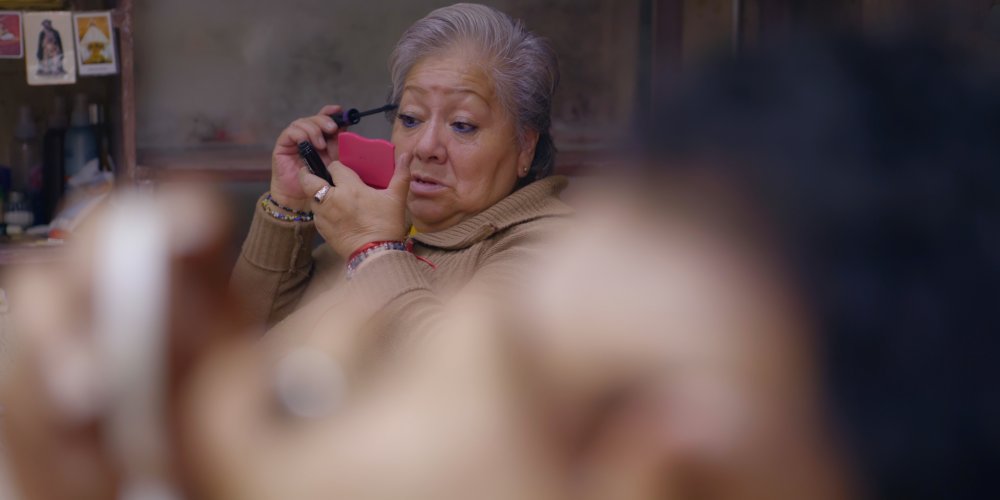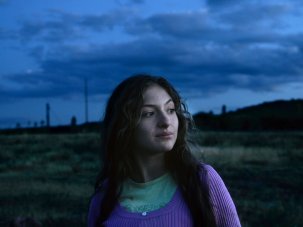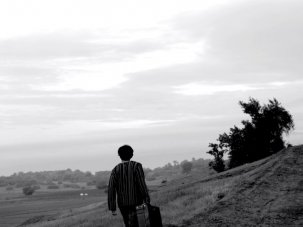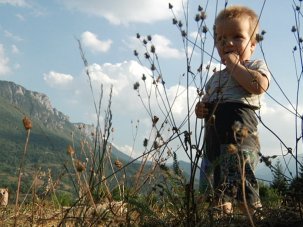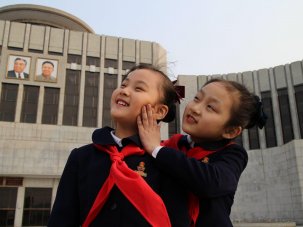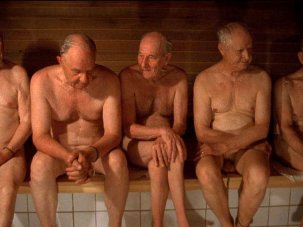If popular criticism of fiction films mostly (if not rightly) begins and ends with the filmmaker, nonfiction film criticism has a tendency towards the opposite, comfortable discussing subject matter, and less frequently the director’s relationship to it.
The 32nd International Documentary Film Festival Amsterdam ran 20 November-1 December 2019.
This question – of the documentary filmmaker’s stake in the material, and more specifically the implications of their choice to reveal or conceal themselves – kept announcing itself as I made my way through the programme at this year’s International Documentary Festival Amsterdam.
Both world premiere La Mami, about a bathroom attendant in a Mexico City nightclub, and Romanian procedural thriller Collective skilfully utilise the observational form, with their respective filmmakers Laura Herrero Garvin and Alexander Nanau making themselves entirely invisible. The advantages of this method are different for each filmmaker.
La Mami
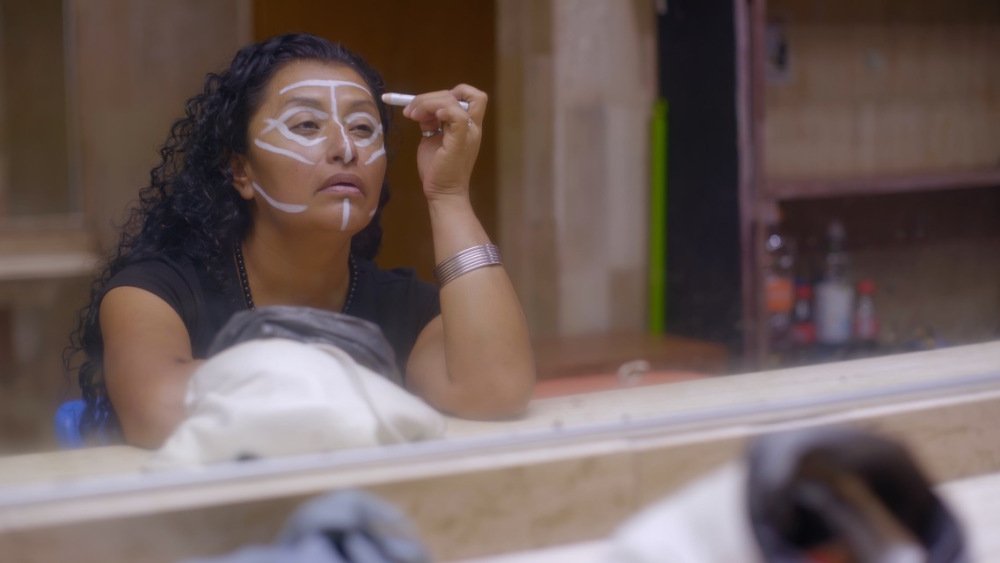
La Mami takes place within the bowels of the Cabaret Barba Azul, mostly playing out in one of the club’s starkly lit bathrooms, a makeshift green room for its female dancers. Doña Olga aka ‘Mami’ acts as matriarch, providing her would-be daughters with hard-won practical and emotional support: a paper towel, a dab of mascara, a word of advice. “Your name is too pretty to be known,” she warns new girl Carmen, suggesting she pick a stage name.
Garvin’s camera watches and learns with keen curiosity as the dancers apply makeup, discuss their home lives and swap tips on how best to handle their male patrons with warm camaraderie. In the wrong hands this distance could feel cold or anthropological, but Garvin’s immersive, fly-on-the-wall approach puts us among Mami and the dancers, not apart from them.
Collective
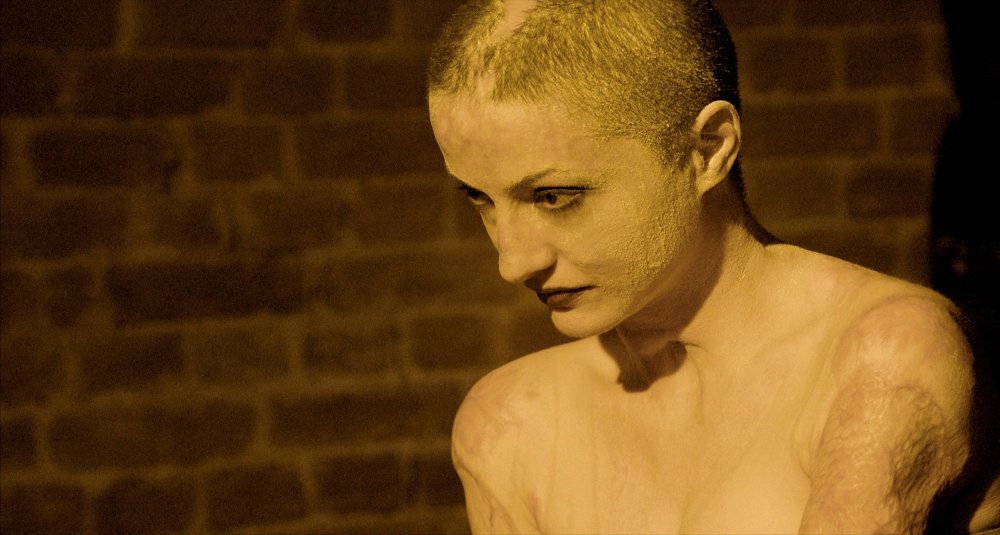
In October 2015 the Bucharest nightclub Colectiv caught fire, killing 27 people, with 37 survivors dying of bacterial infections in hospital due to unsanitary conditions. In his film Collective, Alexander Nanau allows those involved in exposing the national health scandal to tell the story.
Journalist Cătălin Tolontan discovered that disinfectant supplied by wholesaler Hexi Pharma was being diluted before being sold to hospitals, where it was diluted further – as much as ten times. Nanau had extraordinary access to Tolontan and his team, as well as to newly appointed Minister of Health Vlad Voiculescu, who attempts to deal with the fallout.
Nanau’s journalistic distance creates a sense of real-time immediacy as well as underlining the grave seriousness of his perspective; in light of the revelations on show, no additional commentary is required. Indeed, despite the film’s sterile environment of airless boardrooms, the violent spread of infection persists, itself a neat metaphor for the dirty hands of the self-interested, and the creeping rot of corruption.
Marshawn Lynch: A History
At first glance author-turned-filmmaker David Shields appears invisible in Marshawn Lynch: A History, a dynamic, high-velocity collage of African-American football superstar Marshawn Lynch. A white filmmaker animating a black subject presents its own particular set of ethical problems.
It’s smart then, that in associatively editing 770 short clips including viral memes, interviews, adverts and footage from his games, 95 per cent of them sourced from the internet, that Shields is able to essay Lynch’s star persona, and its commodification by the white media, in the athlete’s own words. Or, more accurately, his lack of words: the film is concerned with the legacy of Lynch’s refusal to talk to the press, suggesting that silence could be its own form of eloquence and fury.
Still, though Shields dispenses with voiceover or intertitles, there are narrative leaps and lurches that show the director’s hand. A clip of comedian Louis CK’s on-stage bit about how “it’s better to be white” cuts to a scene of Democratic Party presidential candidate Bernie Sanders being met with thunderous applause, immediately followed by white supremacist Dylan Roof’s arrest in Charleston in 2015; Shields seems to want to implicate himself. Excerpts from Dr. Seuss’s The Cat in the Hat (supposedly Lynch’s favourite book) are less pointedly revealing.
Europa: Based on a True Story
Rwandan filmmaker Kivu Ruhorahoza, on the other hand, emphasises his own voice and perspective in Europa: Based on a True Story, the director’s third film and first foray into nonfiction. An explicit attempt to make a film about Europe that puts his “African concerns front and centre”, his film deploys a sardonic voiceover that is anthropological by design, working as a strategy of decolonisation.
Moving between scenes from A Tree Has Fallen, the romantic drama he had wanted to make (but was unable to fund) and documentary footage of the political protests that took place in London in 2017, Ruhorahoza uses his perspective to better see the migrants rendered ghostly and even “non-existent” by the Conservative party’s ‘hostile environment’ immigration policy. The film-within-a-film device is amateurish and diverting, but the way he films the massed European protesters with intrigue and bewilderment, depicting them as alternately jubilant, frightening and alien, is witty and inventive.
Sunless Shadows
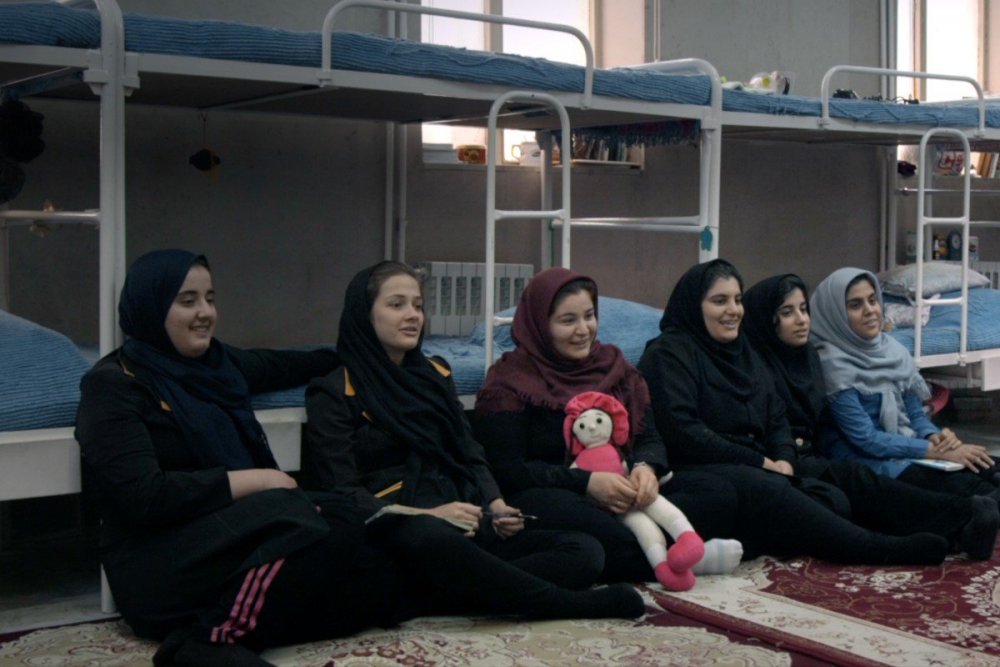
In festival opener Sunless Shadows, which won Mehrdad Oskouei IDFA’s Best Directing prize, though the director’s presence is felt (and occasionally heard, though kept off-camera), it does not overwhelm. Oskouei’s follow-up to 2016’s Starless Dreams also takes place in a correctional facility for girls in Iran, this time focusing on young women who have killed one or more of their male relatives. “What brings one to the point where they kill their father?” asks Oskouei: at times his line of questioning is unnervingly direct.
Yet this directness is rewarded in kind, the young women replying with startling clarity and self-knowledge. In self-tape-style confessionals, they address their victims – and the camera – directly. “We didn’t have the right to kill you,” one girl tells her late brother-in-law. Later interviews suggest that perhaps she did. They call the filmmaker “Uncle Mehrdad” and he includes their lighter moments too: a game of charades, a pottery class and a garrulous exchange with a trapped turtledove in the girls’ dorm room. These inclusions feel like a duty of care that Oskouei generously, appropriately extends his vulnerable subjects.
Which is to say that whether or not a documentary filmmaker opts to show their voice, or their face, the films themselves will always reveal their hand. In nonfiction cinema, the filmmaker’s choice to intervene is a narrative strategy, but the cameraperson (as per Kirsten Johnson’s era-defining doc of the same name) is always implicated. As with their fiction counterparts, films necessarily, if not always explicitly, divulge their filmmakers’ position.
-
The Greatest Documentaries of All Time poll
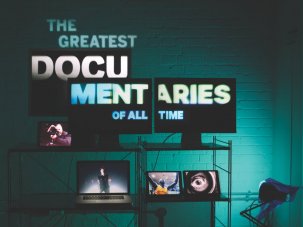
What are the greatest documentaries ever made? We polled 340 critics, programmers and filmmakers in the search for authoritative answers.
-
The Digital Edition and Archive quick link
Log in here to your digital edition and archive subscription, take a look at the packages on offer and buy a subscription.




